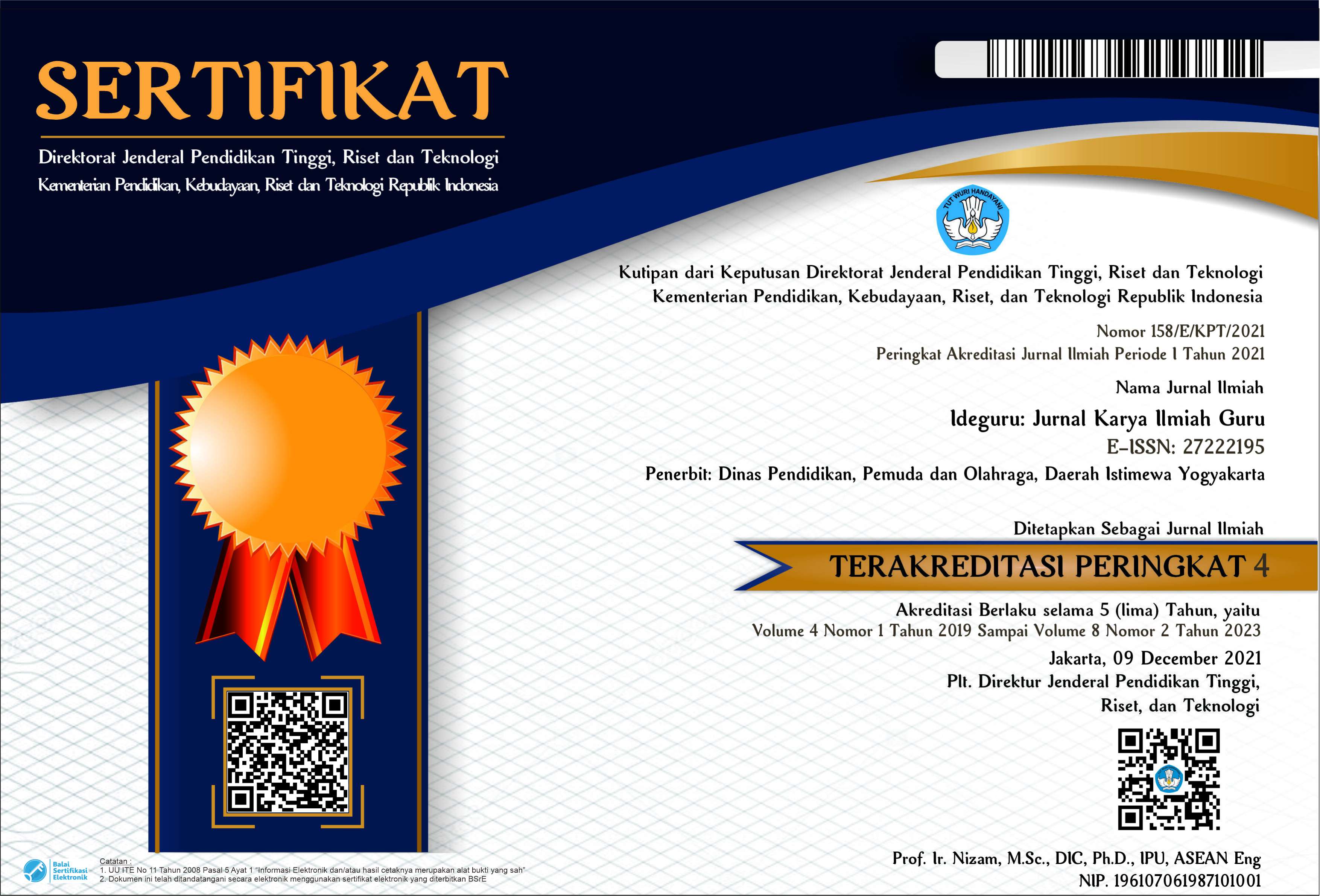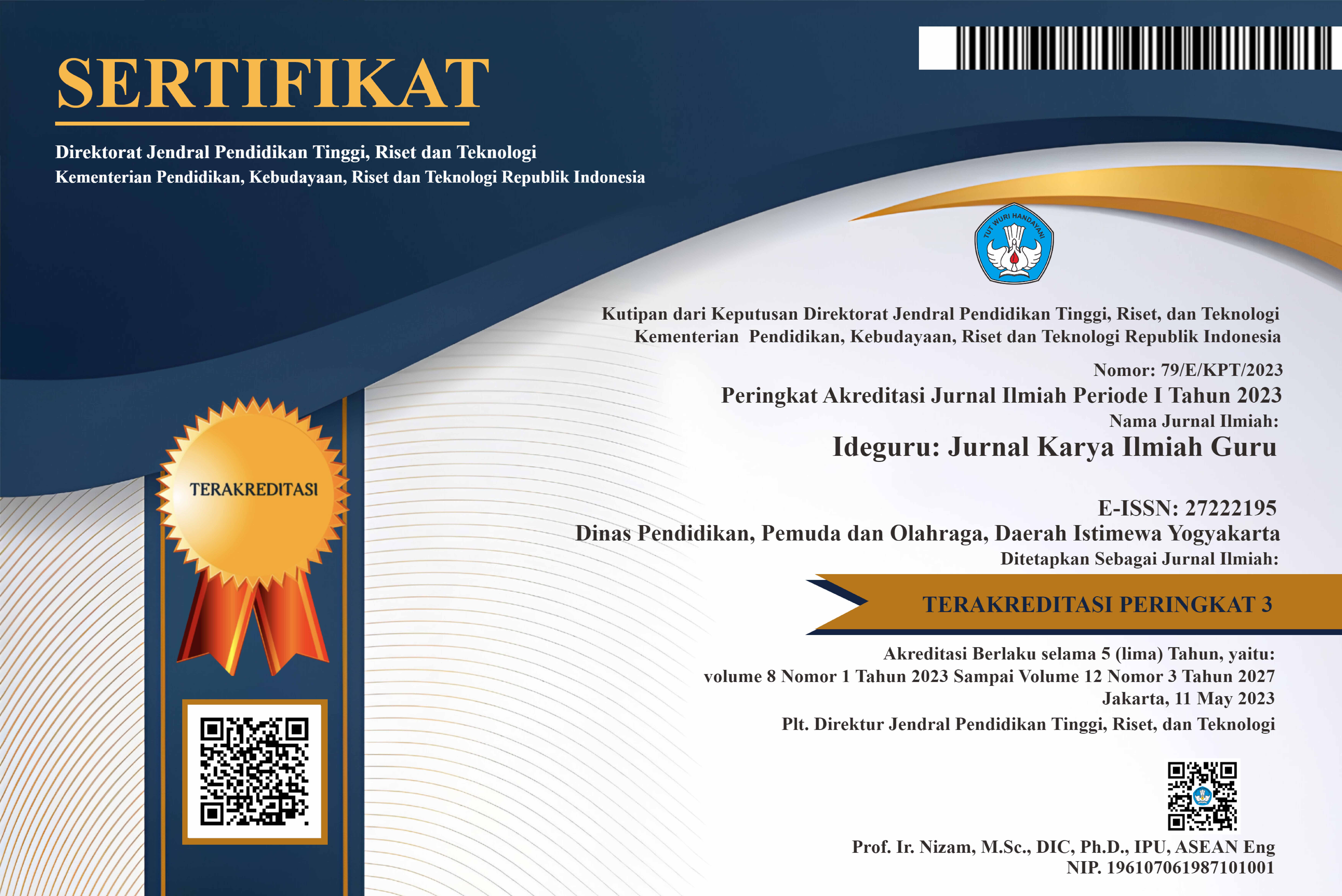Effectiveness of English Teaching Materials Based on the HOTS Integrated Hypertext Model on Students' Learning Outcomes
Abstract
An innovative approach to lesson planning incorporates the high order thinking skill (HOTS) model of learning with a strategy for identifying students' challenging words through hypertext. This study primarily evaluates the effectiveness of English language teaching materials utilising the hypertext integrated HOTS model on student learning outcomes. This study used a pre-test-posttest group design in its research technique, by involving 80 Class X pupils for the school year 2023/2024. Researchers utilised the snowball sampling approach to establish the necessary sample size. The students were assigned to Group A (experimental) and Group B (control). Subsequently, pupils take a pretest to identify any discrepancies between their knowledge levels. The research findings indicate that the observed T value is 8.313 and the significance value is below 0.05. Thus, it can be inferred that incorporating HOTS-based English teaching materials with the hypertext paradigm is effective in improving student learning results. This study is significant as it can enhance proficiency in the English language, particularly by emphasising the teacher's influence on the efficacy of HOTS-based English language teaching materials integrated with the hypertext model on student learning outcomes in English language acquisition.
PDF Downloads
Copyright (c) 2024 Tatu Munawaroh, Yayat Ruhiat, Yudi Juniardi

This work is licensed under a Creative Commons Attribution 4.0 International License.

 DOI:
DOI:














